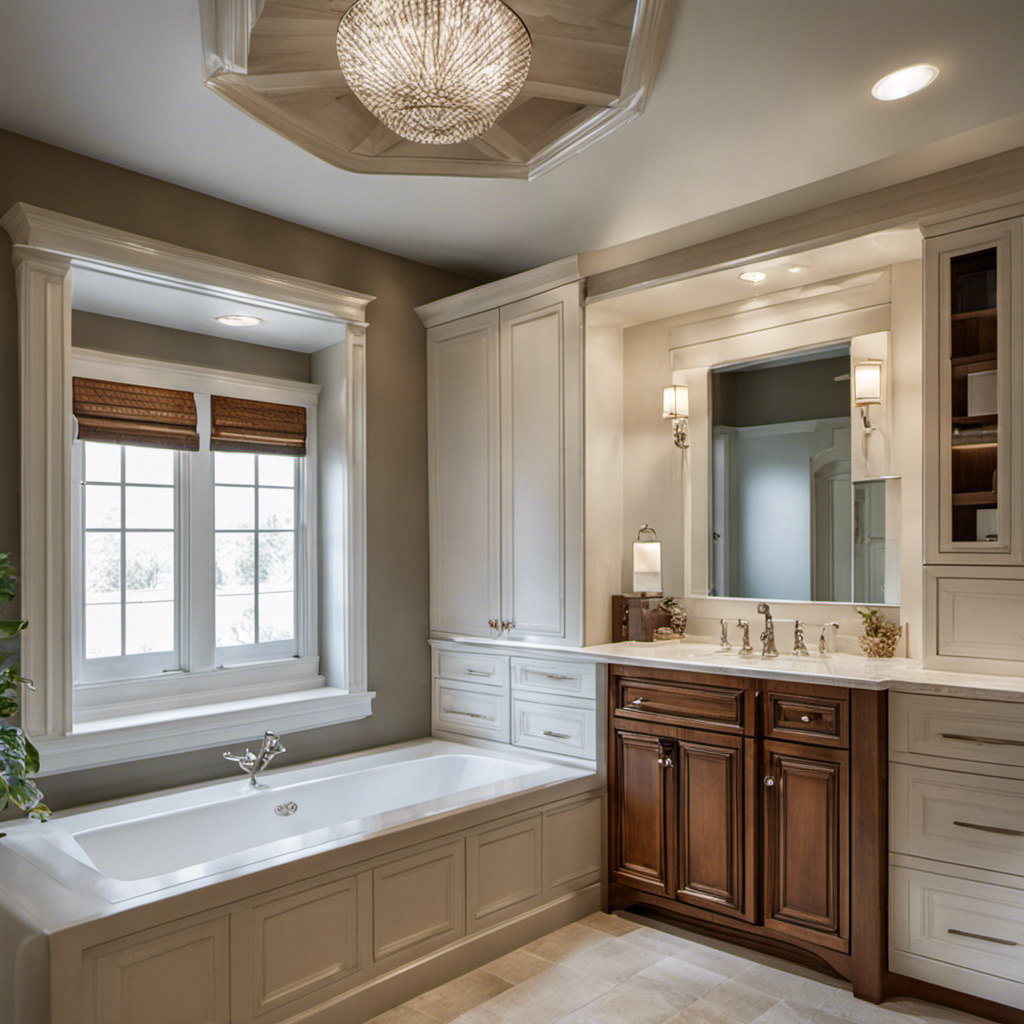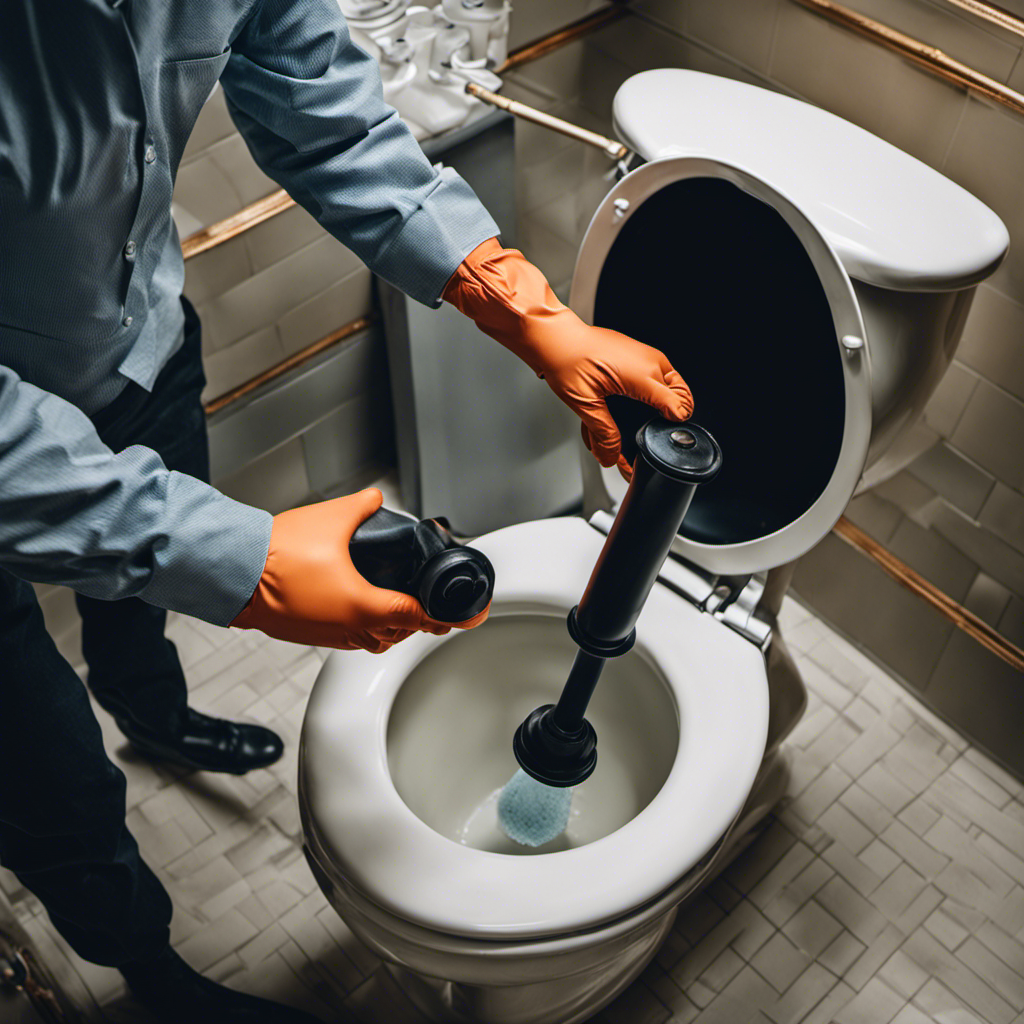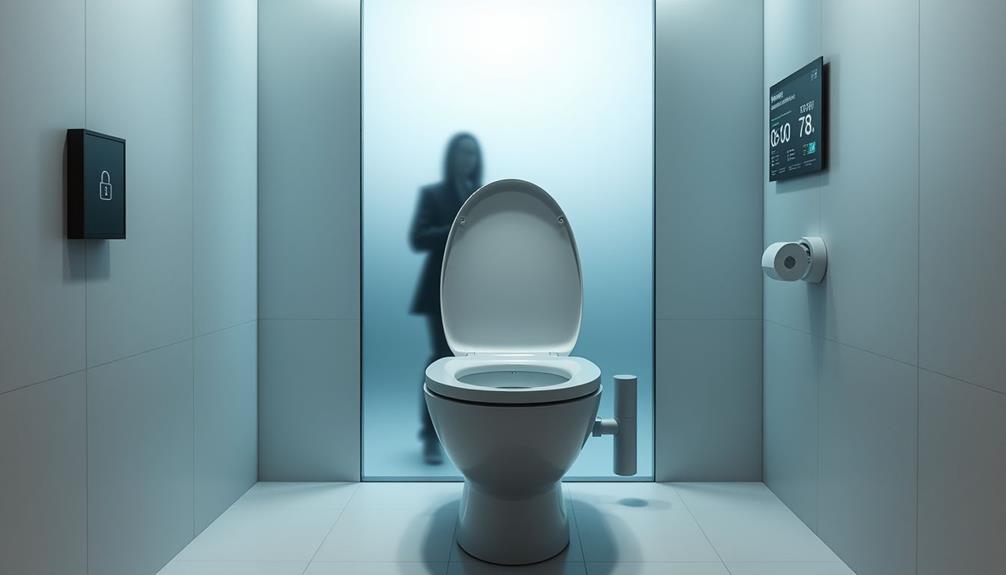In a world of DIY enthusiasts and homeowners trying to cut corners, there is a dangerous and often overlooked practice that plagues many bathrooms: venting the fan into the attic or gable wall. This seemingly innocent shortcut can lead to a host of problems, including the dreaded trifecta of mold, mildew, and rot.
The attic, you see, is not a temperature-controlled haven; it is a breeding ground for condensation and ceiling damage. Improper sealing of the installation can result in leaks, moisture buildup, and the ever-present threat of mold growth. Energy loss, drafts, and water damage are also common side effects of this ill-advised venting choice. And let’s not forget the odors and pollutants that can circulate throughout the attic space, a delightful gift that keeps on giving.
But fear not, for there are approved alternatives for venting bathroom exhaust fans, such as through-wall ventilation, roof venting, and low-profile wall fans. Consulting a professional is key to determining the best venting option for your specific situation.
So, before you embark on your next DIY adventure, remember that the cost of installing an exhaust vent can range from $30 to $500 or more, depending on the method and professional assistance. But the benefits outweigh the price tag, as these approved venting methods can prevent structural issues and ensure proper ventilation.
So, put down the duct tape and pick up the phone to call a professional – your attic and ceiling will thank you.
Key Takeaways
- Venting bathroom fan into the attic can lead to code violations, mold, mildew, and rot.
- Approved alternatives for venting include through-wall ventilation, roof venting, and low-profile wall fans.
- Soffit venting should be avoided as it can violate building codes and cause moisture damage.
- Consulting a professional can help determine the best venting option for specific situations.
Code Violations and Mold Risks
Venting the bathroom fan into the attic is a code violation that can lead to mold, mildew, and rot. Code enforcement agencies strictly prohibit this practice due to the potential health hazards and structural damage it can cause.
When bathroom exhaust air is released into the attic, the moist air can condense on surfaces, creating a breeding ground for mold and mildew. Over time, this can weaken the structural integrity of the attic and promote the growth of rot.
To prevent these issues, it is essential to properly vent the bathroom fan outside the home. This can be achieved by routing the ductwork through the roof or an exterior wall, ensuring that the air is directed away from the attic.
Damage to Attic and Ceiling
Improperly routed bathroom exhaust can lead to moisture buildup and ceiling damage in the attic. When bathroom fans are not properly vented to the outside, the moist air can accumulate in the attic, causing condensation on the surfaces and leading to potential problems such as mold growth, mildew, and rot.
This can result in damage to the attic insulation and compromise the structural integrity of the ceiling. To prevent condensation and protect the attic and ceiling, it is important to ensure that the bathroom exhaust is properly routed outside the home. Additionally, proper insulation in the attic can help regulate the temperature and reduce the risk of condensation.
Installation and Sealing Issues
When installing a bathroom exhaust system, it is crucial to ensure proper sealing and insulation to prevent issues such as moisture buildup and air leaks.
One of the installation challenges that commonly arise is the improper sealing of the ductwork connections. This can lead to air leaks, allowing moisture to escape into the surrounding areas and potentially causing damage to the structure.
Another common sealing mistake is using inadequate or incompatible sealing materials. It is important to use high-quality sealing tapes or caulking that are specifically designed for use in damp environments.
Additionally, proper insulation is essential to prevent condensation and the formation of mold. Insulating the ductwork with insulation sleeves or wraps can help maintain the temperature of the air in the ducts and reduce the risk of moisture-related problems.
Overall, paying attention to these sealing and insulation details during installation can prevent future issues and ensure the efficient operation of the bathroom exhaust system.
Energy Loss and Water Damage
Insufficient insulation and sealing can result in energy loss, drafts, and water damage. This can lead to increased utility costs and potential structural issues. To avoid these problems and improve the energy efficiency of bathroom fan venting, there are some key maintenance tips and energy efficient solutions to consider:
-
Insulate the ductwork: Adding insulation around the ductwork can help prevent energy loss and reduce drafts. This can be done with insulation sleeves or by using spray foam insulation.
-
Seal all gaps and leaks: Ensure that all connections and joints in the ductwork are properly sealed to prevent air leaks. Use foil tape or mastic sealant for airtight sealing.
-
Regular cleaning and maintenance: Clean the bathroom fan and ductwork regularly to remove any dust, debris, or buildup that may obstruct airflow. This will help maintain the efficiency of the fan and prevent water damage.
Odor and Pollutant Circulation
Properly sealing the venting system is essential to prevent odors and pollutants from circulating throughout the attic space. When bathroom exhaust fans are not vented properly, they can contribute to poor air quality and pose health risks.
Unwanted odors, moisture, and pollutants can accumulate in the attic, leading to potential mold growth and damage to the structure. To control pollutants and improve air quality, it is crucial to ensure that the venting system is tightly sealed and properly directed outside the home. This can be achieved by using insulated ductwork, roof venting, or through-wall ventilation.
Through-Wall Ventilation
Installing a through-wall ventilation system allows for an alternative method of directing odors and pollutants outside the home. This method offers flexibility in routing the ductwork, providing homeowners with more options for placement and installation.
With a through-wall ventilation system, the ductwork can be directed to the exterior of the house, ensuring that odors and pollutants are effectively removed from the living space. Additionally, this type of ventilation system can contribute to noise reduction, as the ductwork can be strategically routed to minimize noise transfer.
By considering the layout and structure of the home, homeowners can determine the best path for the ductwork, optimizing both ventilation and noise reduction.
Overall, a through-wall ventilation system offers a practical and efficient solution for directing odors and pollutants outside the home while providing flexibility in routing and noise reduction.
Roof Venting Safety
Roof venting provides a safe and effective method for directing odors and pollutants outside of the home while ensuring proper ventilation.
When it comes to roof venting installation, there are several benefits to consider. One of the main advantages is that it allows for through wall ventilation, which provides flexibility in routing the ductwork. This is particularly useful in residential homes where the bathroom may not be located near an exterior wall.
Additionally, roof venting offers larger, weatherproof vents and various installation options. This helps prevent structural issues and ensures proper ventilation throughout the home. By utilizing approved venting options, homeowners can avoid the risks of venting into the attic or gable wall, such as mold, mildew, and rot.
It is important to consult with a professional to determine the best venting method for each specific situation.
Avoiding Soffit Venting
Using soffit venting for bathroom exhaust fans can lead to building code violations and potential moisture damage. It is important to consider alternatives to soffit venting in order to avoid these drawbacks.
Here are some alternatives to consider:
-
Through-wall ventilation: This method allows for routing the ductwork outside the home, ensuring proper ventilation and avoiding code violations.
-
Roof venting: This is the safest option when going through the attic, as it requires insulated ductwork and provides weatherproof vents.
-
Low-profile wall fans: These are suitable for homes without existing ceiling fans and provide a discreet and efficient venting solution.
Low-Profile Wall Fans
A low-profile wall fan provides a discreet and efficient solution for homeowners without existing ceiling fans. These fans are designed to be mounted on the wall, allowing for easy installation and minimal disruption to the existing space.
One of the key benefits of low-profile wall fans is their cost effectiveness when compared to other venting options. They are generally more affordable than roof venting or through-wall ventilation kits. Additionally, low-profile wall fans require less complex installation and can be a more budget-friendly alternative to hiring a professional for a more extensive venting project.
Despite their low profile, these fans still provide effective ventilation, removing excess moisture and odors from the bathroom. With their sleek design and efficient performance, low-profile wall fans are a practical and cost-effective choice for homeowners looking to improve their bathroom ventilation.
Consulting Professionals for Best Solutions
Consulting professionals can provide valuable expertise and guidance when determining the most suitable venting method for improving bathroom ventilation. Hiring professionals has several benefits when it comes to choosing the right venting solution.
They have in-depth knowledge of building codes and regulations, ensuring that the installation is compliant and safe. Additionally, professionals can assess the specific needs and limitations of the bathroom and recommend the most appropriate venting option.
Considerations for long-term maintenance should also be taken into account when selecting a venting method. Professionals can provide insights on the maintenance requirements of different options, helping homeowners choose a solution that is easy to maintain and cost-effective in the long run.
They can also recommend high-quality products and provide guarantees for the installation, giving homeowners peace of mind. Overall, consulting professionals is a wise decision that can ensure optimal bathroom ventilation and minimize future issues.
Frequently Asked Questions
What Are the Potential Health Risks Associated With Mold and Mildew Growth in the Attic Due to Improper Bathroom Fan Venting?
Improper bathroom fan venting can lead to potential health risks, including mold and mildew growth in the attic. Prevention measures, such as proper sealing and insulation, along with approved venting methods, can help mitigate these risks.
Can Venting the Bathroom Fan Into the Attic Cause Any Structural Damage to the Ceiling or Attic?
Venting the bathroom fan into the attic can cause structural damage to the ceiling and attic. The excessive moisture from the fan can lead to mold, mildew, and rot, compromising the integrity of the attic’s structure.
What Are the Signs of Improper Installation and Sealing of the Bathroom Fan Vent That Homeowners Should Watch Out For?
Signs of improper installation and sealing of a bathroom fan vent include leaks, moisture buildup, and mold growth. Homeowners should watch out for water damage, drafts, and energy loss due to insufficient insulation and sealing.
How Does Insufficient Insulation and Sealing of the Vent Lead to Energy Loss and Water Damage?
Insufficient insulation and sealing of the vent can lead to energy loss and water damage. Without proper insulation, air can escape, causing drafts and increasing energy consumption. Poor sealing allows water to enter, leading to potential structural damage and mold growth.
Can the Odors and Pollutants From the Bathroom Fan Circulate to Other Areas of the House, or Are They Confined to the Attic Space Only?
The odors and pollutants from the bathroom fan can circulate throughout the house, posing health risks if the venting is inadequate. It’s crucial to ensure proper ventilation to prevent these contaminants from spreading beyond the attic space.
Conclusion
In conclusion, it is crucial to avoid venting bathroom fans into the attic or gable wall due to the numerous risks and problems associated with it.
While some may argue that venting into the attic is more convenient and cost-effective, it is important to consider the long-term consequences.
Mold, mildew, and rot can quickly develop, causing significant damage to the ceiling and attic. Furthermore, improper installation and sealing can lead to leaks, moisture buildup, and energy loss.
By consulting professionals and utilizing approved venting methods, such as through-wall ventilation or roof venting, homeowners can prevent structural issues and ensure proper ventilation.
Though the initial cost may be higher, the benefits of using the right venting method far outweigh any potential drawbacks.










